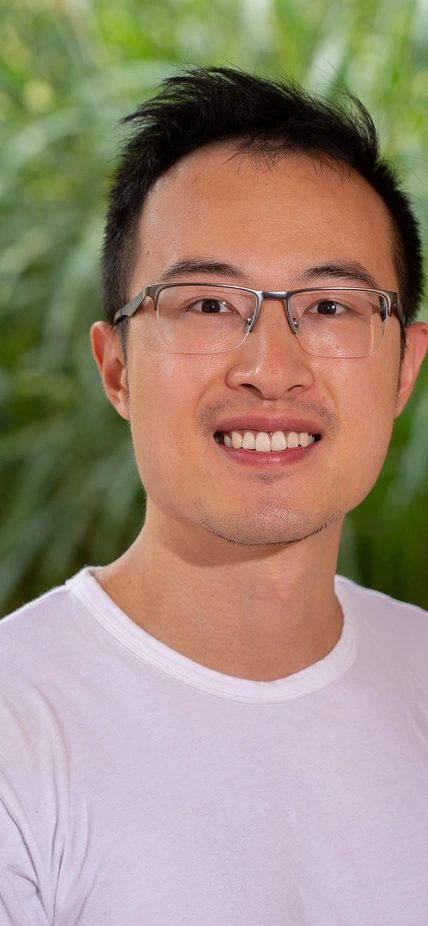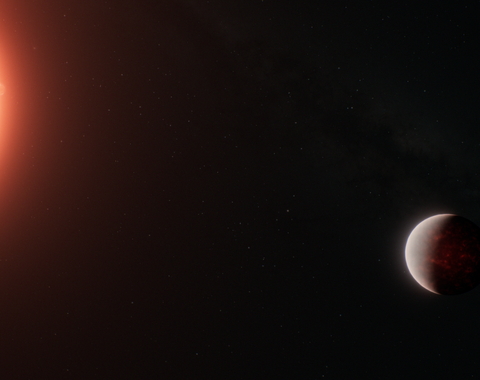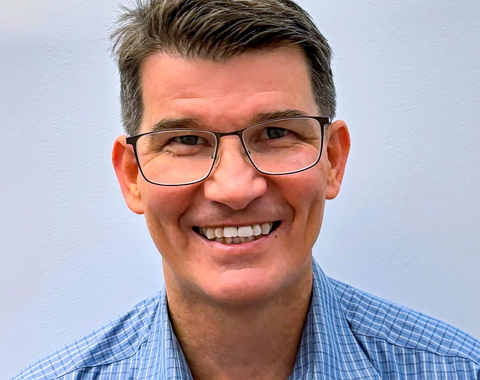Ningli Zhao is a rock physicist who joined the Earth and Planets Laboratory (EPL) in October 2021 (EPL) as the first recipient of the Dr. Paul G. Silver Fellowship. He received his Ph.D. in Geoscience from Brown University, where he trained as an experimentalist. Now, as the first Paul Silver Fellow, Zhao will apply his cutting-edge microphysics research to plate-scale geodynamic models to better understand the evolution of the Earth's mantle.
He works with Staff Scientist Peter van Keken to apply microphysical observations from the lab to global scale geodynamic modeling. He also uses his novel approach to rock physics to understand the role of diffusion creep in subduction zones. His work aims to both answer questions of Earth’s inner dynamics and evolution and to better understand planetary dynamics in general.
Who are you and what do you study?
I joined EPL as a Paul Silver Fellow in October 2021. I was trained as an experimentalist—a.k.a.“rock squeezer." I specifically looked at the microphysics that weakens mantle rocks, which is required for the operation of plate tectonics. Now, I am applying the new microphysics in plate-scale geodynamic models.
What is the coolest thing you've worked on recently?
We often approximate the physical properties of Earth’s upper mantle by that of olivine, although we know that 40% of the mantle is composed of secondary phases, such as pyroxene. During my Ph.D., I studied how and where this approximation breaks down. I conducted experiments on fine-grained olivine and pyroxene mixture mimicking the rocks often found at tectonic plate boundaries. Our experimental result shows that the mixture of two phases is substantially weaker than either of the end-member (https://www.sciencedirect.com/science/article/abs/pii/S0012821X19302237).
This is a rather surprising result that challenges the fundamental assumptions about the viscosity of Earth’s mantle, so we need to carefully interpret and extrapolate this result. We took some tiny slices of the rock samples and reconstructed them atom by atom in 3D with sub-nanometer resolution using atom probe tomography. The chemical gradients along the olivine-pyroxene boundary and olivine-olivine boundary are consistent with our model which explains why olivine-pyroxene aggregate is weaker than monophase olivine (https://link.springer.com/article/10.1007/s00269-019-01045-x). We compared the crystallographic preferred orientation of rock samples with that of our experimental samples and identified features that can be uniquely matched by our experimental samples, suggesting a similar deformation mechanism operates at mantle conditions.
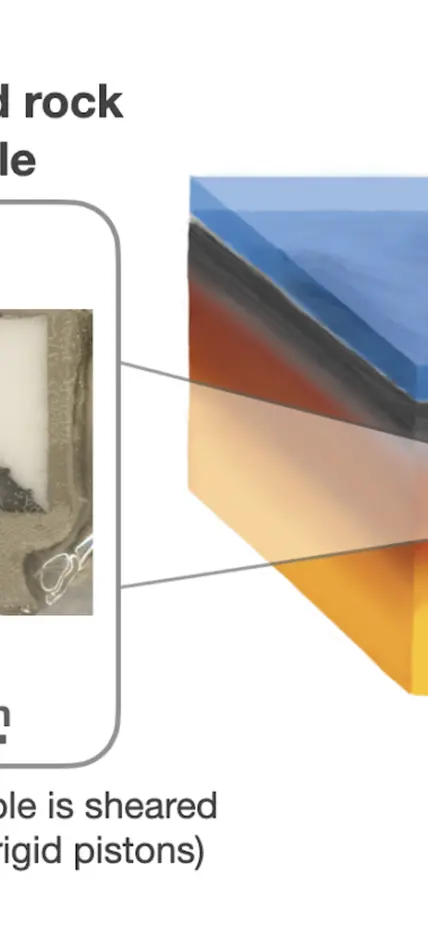
Ningli's research interest across 12 orders of magnitude. From left to right, a 3D reconstruction of a grain boundary, a deformed rock sample, and a subduction zone model.
What are the implications of your research?
Geologists are generally interested in how shear zones form because they have major societal implications. For example, plastic transients of mantle rocks control the rate of reloading on faults, which is critical for modeling earthquake cycles and forecasting. My Ph.D. research provides constraints on the plastic deformation applicable for the shear zone conditions.
Why and how plate tectonics operates and why it is (so far) only observed on Earth are listed as major unresolved problems in A Vision for NSF Earth Sciences 2020-2030. My Ph.D. work, as well as my current work with our Carnegie scientists Peter van Keken and Cian Wilson, will provide constraints on this topic.
What is the most challenging part of your work?
Running high-pressure and high-temperature experiments is challenging. What make it even more challenging (thus rewarding) is that rock physicists also need to precisely measure the mechanical properties of rocks inside these "lab-scale bombs". Each experiment takes weeks to prepare and conduct, but still half of the experiments fail. Sometimes one of my Ph.D. advisors, Greg Hirth, tried to cheer us up by saying, “Be patient, Earth takes millions of years to do what you can finish in two weeks.“
Do you have any recent projects you're excited about?
Seismologists can use a powerful tool called seismic anisotropy to reconstruct the mantle flow hundreds of miles deep inside Earth. However, the interpretation of seismic anisotropy relies on our understanding of how mantle deforms. It is often assumed that the anisotropy structure is produced by “dislocation creep“ (a deformation mechanism), but the role of its competing deformation mechanism, “diffusion creep”, has been overlooked because of experimental limits in the past. Furthermore, some of the anisotropy structure seems to be difficult to explain by a model of dislocation creep. At Carnegie, we will model the role of diffusion creep using the recent experimental results that exhibit how anisotropy structure can develop during the processes of diffusion creep.
How did you get into geophysics?
As an undergrad, I studied exploration geology but a side project of mine that involves looking at the beautiful deformation microstructures got me interested in understanding how they developed. I consulted a grad student at our university (now a professor at Princeton) about grad school, and he told me that a field that I have never heard of, “mineral and rock physics”, is what I should study. This suggestion helped me to make the transition from field geologist to experimentalist. It works out perfectly for me, as the focus of mineral exploration moved from habitable areas to those inhabitable areas where no exploration has been done.
How has your background influenced your research?
My Ph.D. training involves experiments, fieldwork, and geochemistry. My multidisciplinary background allows me to think about the stories of Earth from multiple angles: do the rock records, geochemistry and geodynamics consistently support this story? When there is a mismatch between different perspectives, how can we address the mismatch?
Do you remember the first time you thought you'd be a scientist?
It might be different from others' stories, but I did not think that I would become a scientist until grad school, because I was not the best student in high school nor did I attend the most prestigious university in China.
While many other students stopped taking classes seriously during their undergrad, I worked hard and did pretty well, which gave me opportunities to apply for top research institutions. So I thought why not give it a try.
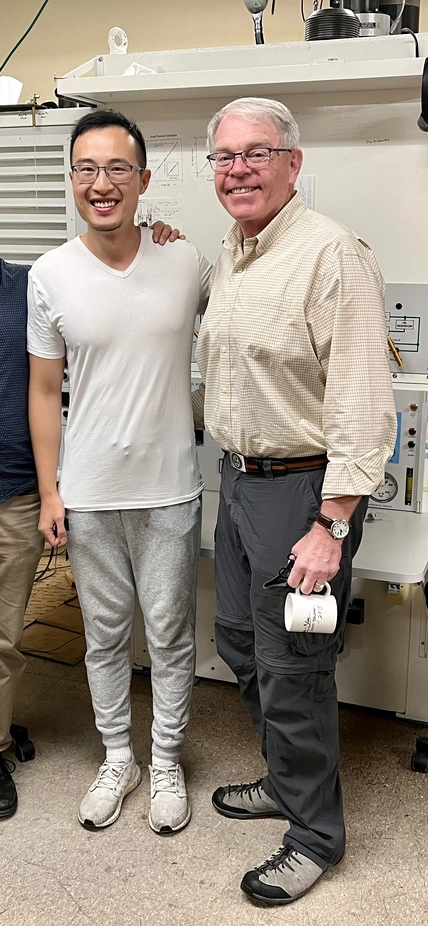
Ningli Zhao in the Rock Deformation Lab at Brown University. From left to right, Greg Hirth, Ningli Zhao, and Reid Cooper. Photo credit: Ningli Zhao.
What else has influenced your thinking as a scientist?
I was a “good” student and listened to everything my advisors told me. But when I started writing my Ph.D. thesis, my advisors told me several times that “There are many things that you shouldn’t trust, especially your advisors”. For me, it is advice right in time, because as an independent researcher, you need to have confidence in your work and defend and advocate for your theories.
What's something about rock physics that people might not know?
Conducting rock physics experiments often requires heavy lifting. One of the critical processes of experimental preparation requires us to hang our body weight on the arm of an arbor press to secure a metal ring around a carbide rod. When I first started working in the lab, my arms were too weak to support my body weight; after several years of practice, now I have no problem hanging onto the arbor press as long as my Ph.D. needed!
While it is an interesting fact of lab work, I think it can also be an obstacle in diversifying our rock physics community. I have been thinking about it and I talked to a few other graduate students and postdocs who agree that we should put some thought into making the future rock physics lab less intimidating for anyone who is interested in rock physics.
Why did you choose Carnegie’s Earth and Planets Laboratory (EPL)?
EPL has a great tradition of interdisciplinary studies which I greatly appreciate. There are many years of advancements in rock physics that are not reflected in the studies of geodynamics. As the great geodynamicist David Bercovici said, “Any model or code is only as good as the physics being used”.
Even though I never did any geodynamic modeling, EPL provides me with the opportunity to collaborate with our staff scientist Peter van Keken and computer scientist Cian Wilson to solve the geodynamic problems that may require the incorporation of new physics.
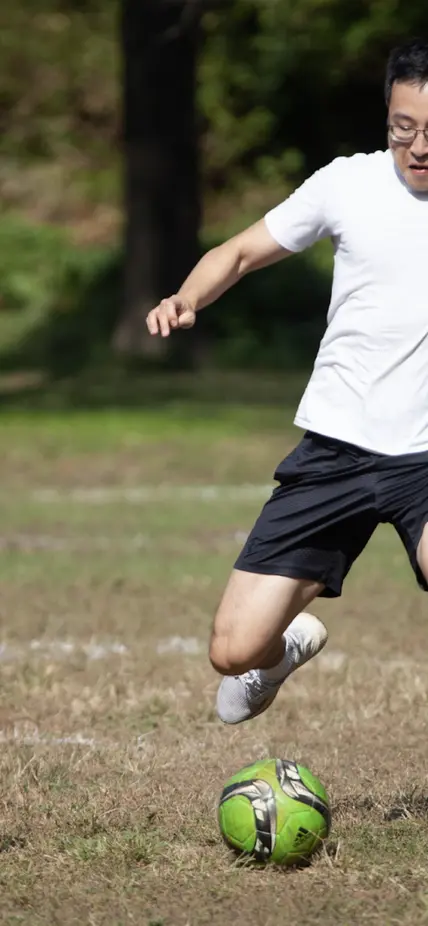
Ningli Zhao plays for the Pistons during the 2021 EPL Mud Cup. October 2021.
Do you have any advice for current graduate students?
Writing skill is probably one of the most important skills that we should keep intentionally practicing. A professor once told me that writing skill is perhaps the most reliable predictor for the success of someone in academia. It seems certainly reliable based on what I observed in our field: the authors of papers that I enjoyed reading the most become rising stars in our field. Another professor (quite modestly) told me that he is really only good at two things, writing proposals and papers.
Anything else you want to add?
Always take good care of your basic human needs. Keep hydrated, don’t forget your breakfast!
